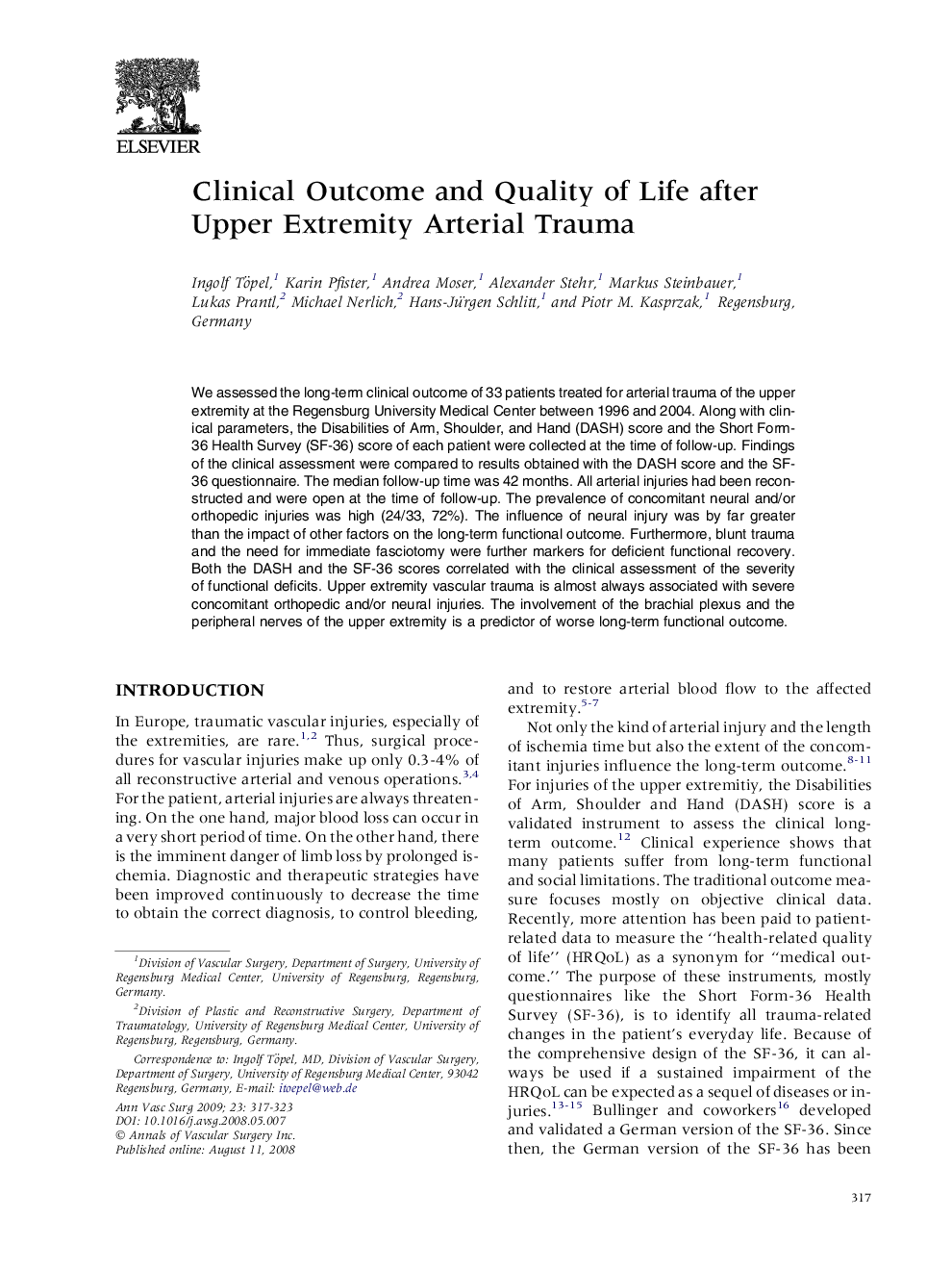| کد مقاله | کد نشریه | سال انتشار | مقاله انگلیسی | نسخه تمام متن |
|---|---|---|---|---|
| 2887406 | 1574250 | 2009 | 7 صفحه PDF | دانلود رایگان |
عنوان انگلیسی مقاله ISI
Clinical Outcome and Quality of Life after Upper Extremity Arterial Trauma
دانلود مقاله + سفارش ترجمه
دانلود مقاله ISI انگلیسی
رایگان برای ایرانیان
موضوعات مرتبط
علوم پزشکی و سلامت
پزشکی و دندانپزشکی
کاردیولوژی و پزشکی قلب و عروق
پیش نمایش صفحه اول مقاله

چکیده انگلیسی
We assessed the long-term clinical outcome of 33 patients treated for arterial trauma of the upper extremity at the Regensburg University Medical Center between 1996 and 2004. Along with clinical parameters, the Disabilities of Arm, Shoulder, and Hand (DASH) score and the Short Form-36 Health Survey (SF-36) score of each patient were collected at the time of follow-up. Findings of the clinical assessment were compared to results obtained with the DASH score and the SF-36 questionnaire. The median follow-up time was 42 months. All arterial injuries had been reconstructed and were open at the time of follow-up. The prevalence of concomitant neural and/or orthopedic injuries was high (24/33, 72%). The influence of neural injury was by far greater than the impact of other factors on the long-term functional outcome. Furthermore, blunt trauma and the need for immediate fasciotomy were further markers for deficient functional recovery. Both the DASH and the SF-36 scores correlated with the clinical assessment of the severity of functional deficits. Upper extremity vascular trauma is almost always associated with severe concomitant orthopedic and/or neural injuries. The involvement of the brachial plexus and the peripheral nerves of the upper extremity is a predictor of worse long-term functional outcome.
ناشر
Database: Elsevier - ScienceDirect (ساینس دایرکت)
Journal: Annals of Vascular Surgery - Volume 23, Issue 3, MayâJune 2009, Pages 317-323
Journal: Annals of Vascular Surgery - Volume 23, Issue 3, MayâJune 2009, Pages 317-323
نویسندگان
Ingolf Töpel, Karin Pfister, Andrea Moser, Alexander Stehr, Markus Steinbauer, Lukas Prantl, Michael Nerlich, Hans-Jürgen Schlitt, Piotr M. Kasprzak,